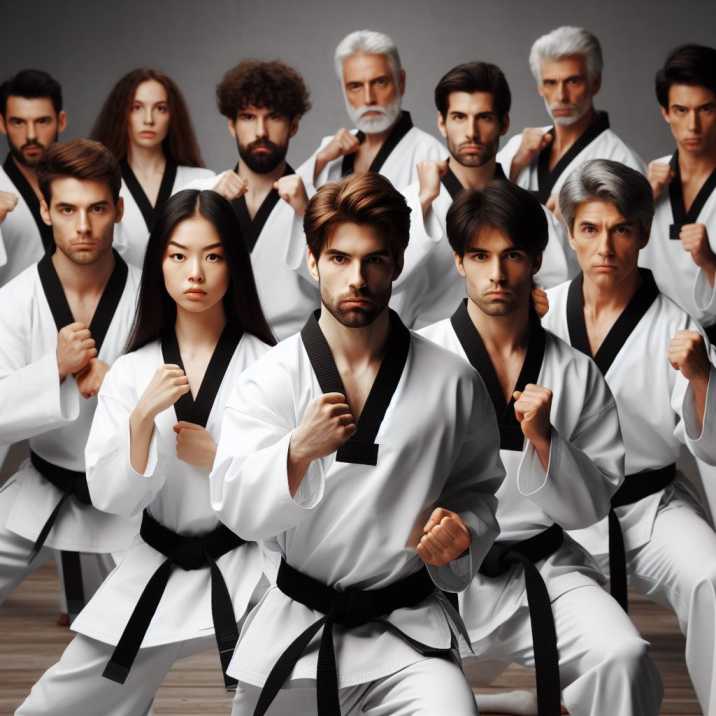Is Taekwondo Korean?
Table of Contents
Introduction
Are you curious about the origins of Taekwondo? Many wonder whether this martial art truly originates from Korea. In this comprehensive guide, we will delve into the rich history, techniques, and cultural significance of Taekwondo to answer the burning question: Is Taekwondo Korean?
Unraveling the History of Taekwondo
To understand the roots of Taekwondo, we must journey back in time to ancient Korea. Taekwondo traces its origins to the Three Kingdoms period (57 BC – 668 AD), where martial arts were essential for self-defense and military training. During this era, warriors honed their skills in hand-to-hand combat and weapon techniques, laying the foundation for what would later become Taekwondo.

Exploring the Origins of the Name “Taekwondo”
The term “Taekwondo” encompasses its essence and philosophy. “Tae” means foot, “Kwon” signifies fist, and “Do” translates to the way or path. Together, these elements encapsulate the martial art’s focus on kicking techniques, hand strikes, and the moral and ethical principles guiding practitioners.
The Influence of Korean Culture on Taekwondo
Korean culture deeply influences Taekwondo, shaping its techniques, rituals, and values. Respect for elders, discipline, and perseverance are integral aspects of Korean society mirrored in Taekwondo training. The martial art also reflects traditional Korean aesthetics through graceful movements and fluidity in combat.
Key Elements of Taekwondo Techniques
Taekwondo emphasizes dynamic kicks, rapid footwork, and powerful strikes. Practitioners learn a variety of techniques, including:
- Front kick (Ap Chagi): Executed with the ball of the foot, targeting an opponent’s midsection.
- Roundhouse kick (Dollyo Chagi): A circular kick aimed at the head or torso.
- Side kick (Yeop Chagi): Delivered with the edge of the foot, targeting the ribs or head.
- Back kick (Dwit Chagi): A powerful thrusting kick executed backward to surprise opponents.
- Flying side kick (Twimyo Yeop Chagi): A spectacular aerial kick demonstrating agility and precision.
The Evolution of Taekwondo as a Sport
In the 20th century, Taekwondo underwent significant transformation, evolving from a traditional martial art into a global sport. The World Taekwondo Federation (WTF), established in 1973, standardized competition rules and promoted Taekwondo on the world stage, leading to its inclusion in the Olympic Games in 2000.
The Global Impact of Taekwondo
Today, Taekwondo transcends borders and cultures, with millions of practitioners worldwide. Its inclusion in the Olympics has further elevated its status, showcasing the artistry and athleticism of Taekwondo practitioners on a global platform. From recreational dojangs to elite competitions, Taekwondo continues to inspire and unite people from diverse backgrounds.
Preserving the Authenticity of Taekwondo
While Taekwondo has evolved over the centuries, it remains rooted in tradition and heritage. Efforts to preserve the authenticity of Taekwondo include:
- Promotion of Korean terminology: Maintaining the use of Korean terminology during training and competitions preserves the cultural identity of Taekwondo.
- Emphasis on etiquette and respect: Bowing to instructors and fellow practitioners is a sign of respect deeply ingrained in Taekwondo culture.
- Preservation of forms (Poomsae): Traditional forms, or Poomsae, showcase a sequence of techniques, embodying the essence of Taekwondo’s heritage.
Dispelling Misconceptions about Taekwondo
Despite its global popularity, Taekwondo faces misconceptions regarding its origins and effectiveness. Some mistakenly believe Taekwondo to be a recent invention or a sport devoid of practical self-defense applications. However, a deeper understanding of Taekwondo reveals its ancient roots and practical combat techniques designed for self-defense.
Embracing the Cultural Diversity of Taekwondo
While Taekwondo is undeniably Korean in origin, its adoption and adaptation by people of diverse cultures enrich its global tapestry. Practitioners from different backgrounds bring their unique perspectives and experiences to Taekwondo, fostering a sense of unity and mutual respect within the global Taekwondo community.
The Future of Taekwondo
As we look to the future, Taekwondo continues to evolve, embracing innovation while honoring its heritage. From technological advancements in training equipment to the exploration of new training methodologies, Taekwondo remains a dynamic and evolving martial art with a rich cultural legacy.
Conclusion
In conclusion, Taekwondo is deeply rooted in Korean culture, reflecting its traditions, values, and philosophy. From its ancient origins to its global prominence today, Taekwondo embodies the spirit of resilience, discipline, and respect. Whether practiced as a sport, a form of self-defense, or a means of personal development, Taekwondo transcends boundaries, uniting people across the world in pursuit of physical fitness, mental strength, and cultural exchange.
FAQs:
- Is Taekwondo only practiced in Korea?
- Answer: While Taekwondo originates from Korea, it is practiced worldwide, with millions of practitioners in various countries.
- Can anyone learn Taekwondo?
- Answer: Yes, Taekwondo is accessible to people of all ages and backgrounds, offering physical and mental benefits to practitioners.
- Is Taekwondo only about fighting?
- Answer: While Taekwondo includes self-defense techniques, it also emphasizes discipline, respect, and personal development.
- How long does it take to become proficient in Taekwondo?
- Answer: The time to proficiency varies for each individual, depending on factors such as dedication, practice frequency, and natural aptitude.
- Is Taekwondo an Olympic sport?
- Answer: Yes, Taekwondo has been an official Olympic sport since the 2000 Sydney Games, showcasing its global popularity and significance.


